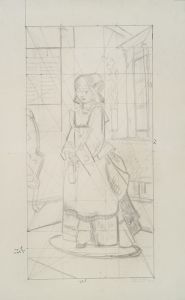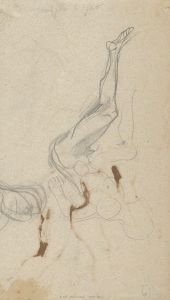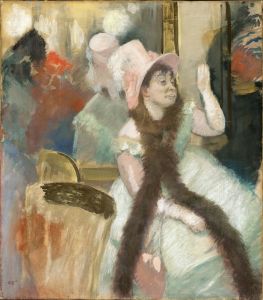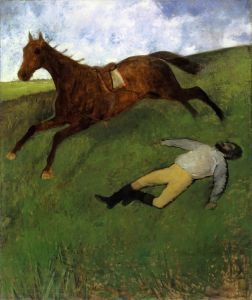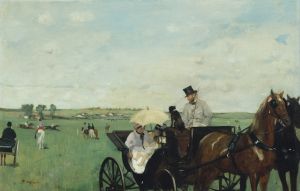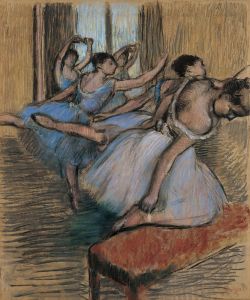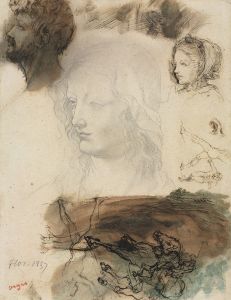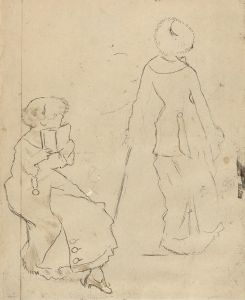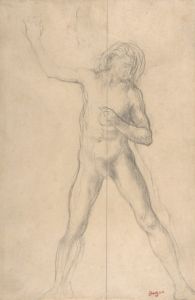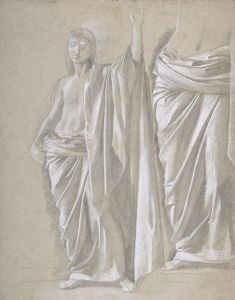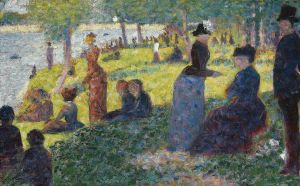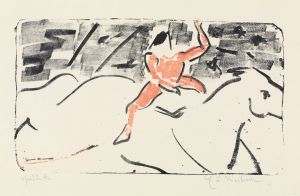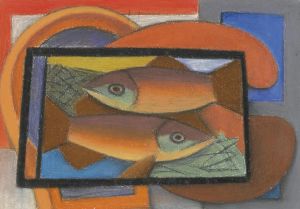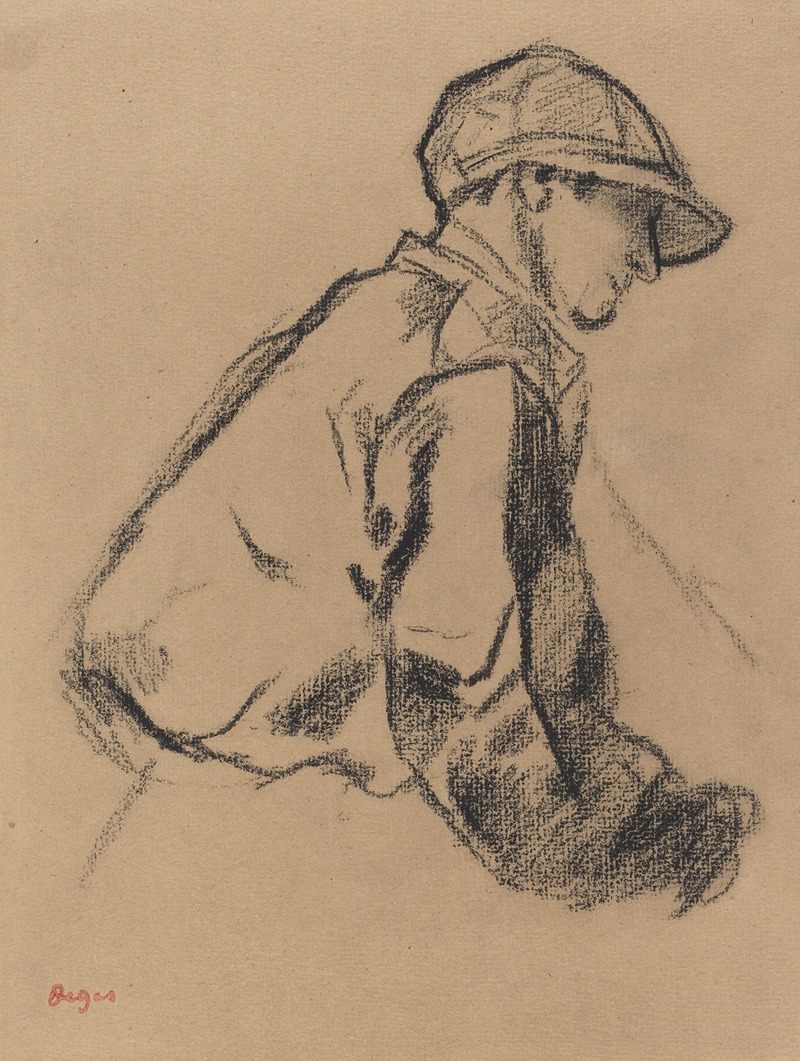
Study of a Jockey
A hand-painted replica of Edgar Degas’s masterpiece Study of a Jockey, meticulously crafted by professional artists to capture the true essence of the original. Each piece is created with museum-quality canvas and rare mineral pigments, carefully painted by experienced artists with delicate brushstrokes and rich, layered colors to perfectly recreate the texture of the original artwork. Unlike machine-printed reproductions, this hand-painted version brings the painting to life, infused with the artist’s emotions and skill in every stroke. Whether for personal collection or home decoration, it instantly elevates the artistic atmosphere of any space.
"Study of a Jockey" is a work by the renowned French artist Edgar Degas, who is celebrated for his contributions to the Impressionist movement, although he preferred to be called a Realist or Independent. Degas is best known for his depictions of dancers, but he also had a profound interest in capturing the dynamism and elegance of horse racing, a popular subject in 19th-century France.
Edgar Degas was born on July 19, 1834, in Paris, France, and he spent much of his career exploring various themes and techniques. His fascination with horse racing began in the 1860s, and he continued to explore this subject throughout his life. Degas was intrigued by the movement and form of horses and jockeys, which he captured through a series of paintings, drawings, and sculptures.
"Study of a Jockey" is one of Degas's many works that focus on the theme of horse racing. While specific details about this particular piece are limited, it is consistent with Degas's broader body of work on equestrian subjects. Degas often visited racetracks and stables to observe horses and jockeys in action, and he used these observations to inform his art. His works in this genre are characterized by their dynamic compositions and attention to the anatomy and movement of horses.
Degas's technique often involved a combination of drawing and painting, and he was known for his ability to capture fleeting moments with precision and grace. His studies of jockeys and horses frequently employed pastels, oils, and sometimes even sculpture, showcasing his versatility as an artist. Degas's approach to these subjects was both analytical and expressive, reflecting his deep understanding of form and movement.
In his equestrian works, Degas often experimented with unusual perspectives and compositions, sometimes cropping figures in unexpected ways to create a sense of immediacy and motion. This approach was part of his broader interest in capturing modern life and its dynamic qualities. His work in this area was influential in the development of modern art, as it challenged traditional representations and embraced new ways of seeing and depicting the world.
Degas's studies of jockeys and horses are not only significant for their artistic merit but also for their reflection of contemporary society. Horse racing was a popular pastime in 19th-century France, and it attracted a diverse audience from different social classes. By focusing on this subject, Degas was engaging with a cultural phenomenon that was both fashionable and emblematic of modernity.
Overall, "Study of a Jockey" exemplifies Edgar Degas's skill in capturing movement and his innovative approach to composition. While specific details about this particular study may be scarce, it remains an important part of Degas's exploration of equestrian themes and his broader artistic legacy.





